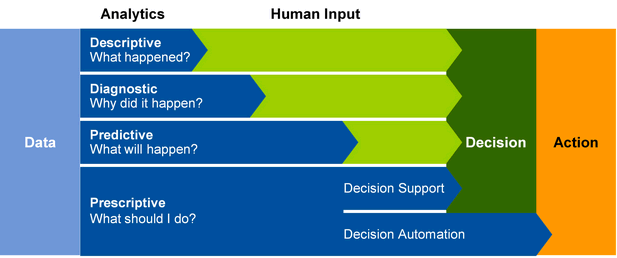Gartner, Inc. said advanced analytics is a top business priority, fueled by the need to make advanced analysis accessible to more users and broaden the insight into the business. Advanced analytics is the fastest-growing segment of the business intelligence (BI) and analytics software market and surpassed $1 billion in 2013.
"While advanced analytics have existed for over 20 years, big data has accelerated interest in the market and its position in the business," said Alexander Linden, Research Director at Gartner. "Rather than being the domain of a few select groups (for example, marketing, risk), many more business functions now have a legitimate interest in this capability to help foster better decision making and improved business outcomes."
IT and business leaders must expand their efforts to move their organizations from using only traditional BI that addresses descriptive analysis (what happened) to advanced analytics, which complements by answering "why", "what will happen" and "how we can address it".

Source: Gartner (October 2014)
"While basic analytics provide a general summary of data, advanced analytics deliver deeper data knowledge and granular data analysis," added Linden. The rewards of data-driven decision making can be a powerful boost to business outcomes. However, creating value from data requires a range of talents, from data integration and preparation, to architecting specialized computing/database environments, to data mining and intelligent algorithms. "Extracting value out of data is not a trivial task," said Linden. "One of the key elements of any such 'making sense out of data' program is the people, who must have the right skills and capabilities."
Data scientists in the organization support big data initiatives for which the No. 1 use case is enhancing customer experience. According to Gartner's latest global big data survey conducted in 2014, 68 per cent of respondents said that they use big data to enhance their customer experience. This is the third year customer experience has been a top business problem to address.
"Data scientists are not business analysts," said Linden. "They are professionals with the capability to derive mathematical models from data to reap clear and hard-hitting business benefits. They need to network well across different business units and work at the intersection of business goals, constraints, processes, available data and analytical possibilities."
Ultimately, data science is inevitable as it can help extract various kinds of knowledge from data, for example, how to acquire new customers (database marketing), how to do more cross-selling (via propensity-to-purchase modeling), information on route optimization, drug design and demand or failure prediction.
"Whether an organization calls the role data scientist or something else, individuals (or teams of professionals) with these core skills and soft skills will prove essential in maximizing the realized value of your information assets, and discovering opportunities for enhanced business performance and competitive advantage," said Linden.
About Gartner's Global Big Data Survey: The Gartner survey of 302 Gartner Research Circle members worldwide, which was conducted in June 2014, was designed to explore organizations' technology investment plans relating to big data, stages of big data adoption, business problems solved data, technology and challenges and compare the results with those from previous years.


